前の10件 | -
色の白きは七難隠す・光がつくる美白 [民俗・行事]
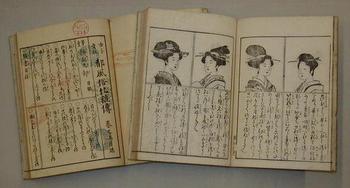
[引用]大阪府立中之島図書館
日本人の美意識として、色白が好まれる歴史的背景を考えた場合、奈良時代までさかのぼることができます。
現在の意識では、戦後の西洋文化礼賛の産物のように思われますが、実は、6世紀に仏教とともに、白粉の化粧法が伝わってきたことからはじまるといってよいでしょう。
当時、白は、神事に使用される色として、もっとも高貴なものと位置付けられていました。
奈良時代の色については、聖徳太子の冠位十二階では、「徳・仁・礼・信・義・智」それぞれに、紫・青・赤・黄・白・黒が配され、紫が高貴な色と位置づけられていると解釈されますが、その上位に、別途「白」が設定されており、神事の際に使用するものと説明があります。つまり、十二階の「白」とは違う素材・色であることがうかがえます。
日本における「白」にかんする記事としては、『日本書紀』持統天皇6年閏5月条に
戊戌に、沙門觀成に、絁十五匹・綿三十屯・布五十端賜ふ。
其の造れる鉛粉を美めたまへり。
とあります。
従来は、この記事をもって、日本の鉛白製造の開始と解釈されますが、これに関しては、正倉院宝物の調査から、鉛白製造ではなく、日本独自の疑似鉛白(=塩化物系鉛化合物)の製造を始めたとみることが穏当であるといわれています。
鉛白の種類はともかく、この時代にはすでに「白」が珍重され、宝物等にも使われることになったことがわかります。
平安時代には、いわゆる「白塗り」文化が花開きます。
なぜ、(貴族の)女性たち(男性も同じですが)は、白塗りをしたのか。
当時の住宅状況を考えるとわかりやすいのですが、特に貴族は寝殿造りという、平屋建ての建物に住んでいました。高貴な身分の姫君は建物の奥まった部屋にいることが多く、当然ながら、部屋に光が射し込むこともあまりありません。
そのような薄暗い部屋に座る姫君の存在感を確保するためには、暗闇の中にぼぅっと浮かび上がる白塗りの顔が有効でした。
薄暗い中、白く浮かび上がるその存在は、まるで身の内から光を放っているように感じます。
『竹取物語』のかぐや姫や、『源氏物語』の光源氏という、美の体現した人物の名が示すように、身から光を放つ存在というのは、神秘であり、神聖であり、そして美しい存在でもありました。
白塗りの顔というのは、その美を表現するのに、とても良い化粧法であったということがわかります。
時代はくだり、「色のしろきは七難かくす」と記しているのは、江戸後期に出版された『都風俗化粧伝』です。
画像は、大阪府立中之島図書館蔵の『都風俗化粧伝』3巻(佐山半七丸著、速水恒章(春暁)画、嘉永4年)で、内容としては、化粧法や身仕舞い、身のこなし方、髪型やファッションなどについて記したものです。
江戸時代になると、少し薄づきの化粧が好まれますが、白い肌が美のポイントになっていることを端的にあわらした文章です。
もちろん、「白塗り」が好まれた背景として、鉛白が非常に高価なものであり、その効果なおしろいを使用できる身分であるという、いわゆる社会的身分(ステイタス)を示していることとの関連は指摘できるでしょう。
しかしながら、「光」という装置を考えることで、人々の心に「白」が好まれる背景をより理解しやすくなると思われます。
タグ:美白 肌 歴史 光
Hatsumode [年中行事]
"Hatsumode(初詣)" is an event to pray for safety and peace for the year by visiting a shrine or temple in the New Year.
This custom begins in the Edo era.
This custom of original is "Toshigomori(年籠り)".
"Toshigomori" is the custom that a patriarch stays in shrine or temple of the patron saint for prayer from the night of the last day of the year to the morning of new Year's Day.
Eventually "Toshigomori" was divided into ”Joyamoude(除夜詣)” that prayer from the night of the last day of the year, and ”Gantanmoude(元日詣)” that prayer from the morning of new Year's day.
The origin of "Hatsumode" is ”Gantanmoude”.
Urbanization advanced in the Edo era, and people enjoyed an event, and acted became wide.
Therefore the prayer became popular in the shrines and temples in a good direction.
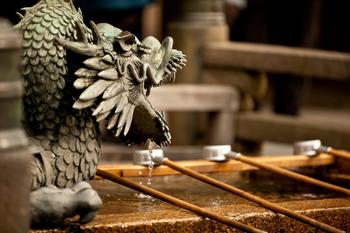
This custom begins in the Edo era.
This custom of original is "Toshigomori(年籠り)".
"Toshigomori" is the custom that a patriarch stays in shrine or temple of the patron saint for prayer from the night of the last day of the year to the morning of new Year's Day.
Eventually "Toshigomori" was divided into ”Joyamoude(除夜詣)” that prayer from the night of the last day of the year, and ”Gantanmoude(元日詣)” that prayer from the morning of new Year's day.
The origin of "Hatsumode" is ”Gantanmoude”.
Urbanization advanced in the Edo era, and people enjoyed an event, and acted became wide.
Therefore the prayer became popular in the shrines and temples in a good direction.

Osechi-ryori [年中行事]
"Osechi-ryori(おせち料理)" is Japanese traditional dish.
Now, it is a dish to eat for New Year's day.
"Osechi-ryori" means seasonal festival "Sokku(節供)". Japan has a four season that spring, summer, autumn, winter. "Sekku" means the day of the opening of the season. "Osechi-ryori" is dish to eat on the day of the seasonal festival. Now, it came to say a dish to eat for New Year's day that was the day of the spring opening with "Osechi-ryori".
The origin of "Osechi-ryori" is a eat ceremony that "Shinjin-kyosyoku(神心共食)" of the Nara era. The people gives God a dish and eats the dish which they gave afterwards. It is important to eat with God. This is because it can acquire power of God.
In the Edo era, a custom eating with God spreads out to the people. People put a dish in a ”ju-bako(重箱)” to give God. The kind of the dish to put in a "ju-bako" is decided all.
The Japanese thinks that a soul dwells in words. So, people add a meaning to materials of "Osechi-ryori". Therefore people put ingredients of the happy meaning of a word in "Osechi-ryori".
"Osechi-ryori" eat happy food and are an event to pray for health.
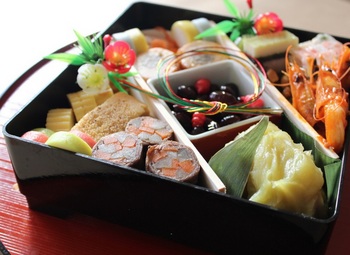
Now, it is a dish to eat for New Year's day.
"Osechi-ryori" means seasonal festival "Sokku(節供)". Japan has a four season that spring, summer, autumn, winter. "Sekku" means the day of the opening of the season. "Osechi-ryori" is dish to eat on the day of the seasonal festival. Now, it came to say a dish to eat for New Year's day that was the day of the spring opening with "Osechi-ryori".
The origin of "Osechi-ryori" is a eat ceremony that "Shinjin-kyosyoku(神心共食)" of the Nara era. The people gives God a dish and eats the dish which they gave afterwards. It is important to eat with God. This is because it can acquire power of God.
In the Edo era, a custom eating with God spreads out to the people. People put a dish in a ”ju-bako(重箱)” to give God. The kind of the dish to put in a "ju-bako" is decided all.
The Japanese thinks that a soul dwells in words. So, people add a meaning to materials of "Osechi-ryori". Therefore people put ingredients of the happy meaning of a word in "Osechi-ryori".
"Osechi-ryori" eat happy food and are an event to pray for health.

万能細胞に向かう思想 [アカデミズム]
2014年1月29日に発表された万能細胞(STAP細胞)について、さまざまなメディアが紹介しています。
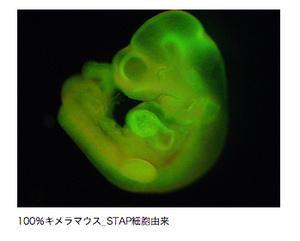
人文科学の立場から、山中教授(京都大学)のiPS細胞や出澤教授(東北大学)のMuse細胞をはじめとする今回の一連の研究を眺めると、古代の仙薬追求から、人間の追い求めるものは変わらない、という印象を抱きました。
人間はいつの世も、死と向き合い、戦ってきました。
臓器の再生など、安易な表現をすれば、アンチエイジングにまつわるこれらの研究は、エジプトのミイラや秦の始皇帝による仙薬探しの旅と同様に、人々の心をつかんで離さないテーマです。
人間はどこまで、生命の謎に近づくことができるのか。
人文科学の分野においても、非常に関心があります。

人文科学の立場から、山中教授(京都大学)のiPS細胞や出澤教授(東北大学)のMuse細胞をはじめとする今回の一連の研究を眺めると、古代の仙薬追求から、人間の追い求めるものは変わらない、という印象を抱きました。
人間はいつの世も、死と向き合い、戦ってきました。
臓器の再生など、安易な表現をすれば、アンチエイジングにまつわるこれらの研究は、エジプトのミイラや秦の始皇帝による仙薬探しの旅と同様に、人々の心をつかんで離さないテーマです。
人間はどこまで、生命の謎に近づくことができるのか。
人文科学の分野においても、非常に関心があります。
タグ:仙人 万能
PRAYING TO JINGU [民俗・行事]
This year, "Amaterasu-ohmikami" has moved to new shrine. The other Gods have moving to one after another now. "Amaterasu-ohmikami" is main God's name of Jingu, and Jingu is Ise Shrine at Mie prefecture.
Currently, many people are going and praying to Jingu. However, it's not correct from viewpoint of traditional Shintoism. Because, while God is moving, people must stay at home and do "monoimi". "Monoimi" means purified myself by abstaining from certain foods and activities.
So, visiting to Ise, the next year is the best year.
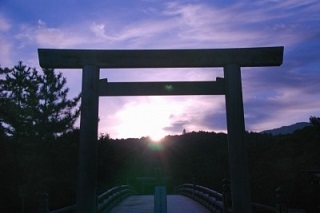
Currently, many people are going and praying to Jingu. However, it's not correct from viewpoint of traditional Shintoism. Because, while God is moving, people must stay at home and do "monoimi". "Monoimi" means purified myself by abstaining from certain foods and activities.
So, visiting to Ise, the next year is the best year.

タグ:神宮
MIKOSHI [民俗・行事]
Now, there is a Gion Festival in Kyoto, Japan.
God is the leading part of Japanese Festival. Susanowo-no-mikoto who is the main God of Yasaka Shrine, is the leading element in the Gion Festival. People install God soul in God's car called 'Mikoshi' tonight.

God is the leading part of Japanese Festival. Susanowo-no-mikoto who is the main God of Yasaka Shrine, is the leading element in the Gion Festival. People install God soul in God's car called 'Mikoshi' tonight.

タグ:神輿
ZEN [民俗・行事]
ZEN is basic ideals of Japanese culture. It's religion that made to Japanese tea ceremony and Bushido, means the code of the samurai.
Zen's idea is that a man knows oneself and hasn't oneself. Zen teachers say that all of the world are nothing, nothing is all of the world.
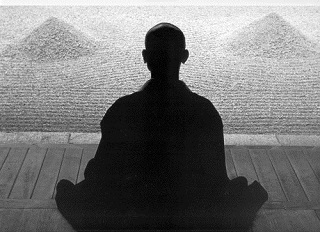
Zen's idea is that a man knows oneself and hasn't oneself. Zen teachers say that all of the world are nothing, nothing is all of the world.

タグ:禅
Event of Japanese ancient Shinto in 2013 [民俗・行事]
There are two major events in the field of Japanese ancient Shinto in 2013.
One is "Sengu", means moving God from old shrine to the new one, of Izumo Shrine at Shimane prefecture.
This is the time that God will return to main shrine that newly build in May 2013.
Another one is "Shikinen Sengu" of Ise Shrine at Mie prefecture.
This is the time that shrine pavilions are rebuilted every 20 years, and also the costume of God and sacred treasures are newly made. These shinto rituals will be done from August to October.
These two big Shinto rituals have very important meaning on Ritual studies.
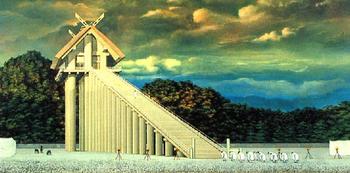
Izumo Shrine at Shimane prefecture
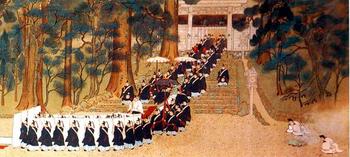
Ise Shrine at Mie prefecture
One is "Sengu", means moving God from old shrine to the new one, of Izumo Shrine at Shimane prefecture.
This is the time that God will return to main shrine that newly build in May 2013.
Another one is "Shikinen Sengu" of Ise Shrine at Mie prefecture.
This is the time that shrine pavilions are rebuilted every 20 years, and also the costume of God and sacred treasures are newly made. These shinto rituals will be done from August to October.
These two big Shinto rituals have very important meaning on Ritual studies.

Izumo Shrine at Shimane prefecture

Ise Shrine at Mie prefecture
タグ:式年遷宮 伊勢 出雲
OMIKUJI [民俗・行事]
People draw lots in the shrine in the New Year's day.
It's called "omikuji".
After draw lots, it's tied to the branches in the shrine.
This act has meaning. It means that "tie a wish".
When you pull a lot of good results, so as to realize good results that "tie a wish". Therefore, when you pull a lot of bad results, you should not tied to a branch. Because you are to achieve the results that bad.
If you pull draw lots writing bad luck, you should throw it into the sacred fire at the shrine.
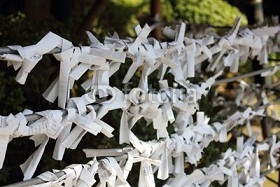
It's called "omikuji".
After draw lots, it's tied to the branches in the shrine.
This act has meaning. It means that "tie a wish".
When you pull a lot of good results, so as to realize good results that "tie a wish". Therefore, when you pull a lot of bad results, you should not tied to a branch. Because you are to achieve the results that bad.
If you pull draw lots writing bad luck, you should throw it into the sacred fire at the shrine.

タグ:おみくじ
OTOSHIDAMA [民俗・行事]
When I was a childhood, "otoshidama" is a pleasure ceremony in New Year.
"Otoshidama" is originally meaning the benefits and blessings of "toshigami-sama". "Toshigami-sama" mean "the year's God".
Even now, in the Katsura River in Kyoto is taking a stone in riverside in the morning of the New Year.
This stone is dedicated to Kurumazaki shrine.
"Toshigami-sama" dwells in new riverside is a sacred place. So, people goes to a river, and taking a stone in New Year. And the stone is dedicate to Kurumazaki shrine.
It's believe that I offered the stone and a spiritual power dwell in myself.
This is "mitama-no-fuyu" by theory of Origuchi Shinobu.
"Mitama" means "the Holy Spirit-soul", and "fuyu" means "shake".
It's that spirit by touching the stone, inspire your soul, and obtaining the benefits.
"Otoshidama" is the soul of "Toshigami-sama".
The origin of "Otoshidama" is to hope for a healthy year by the spiritual power of "Toshigami-sama".
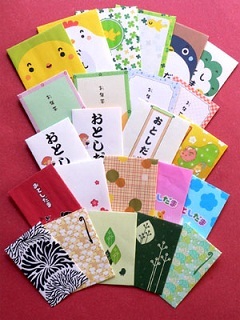
"Otoshidama" is originally meaning the benefits and blessings of "toshigami-sama". "Toshigami-sama" mean "the year's God".
Even now, in the Katsura River in Kyoto is taking a stone in riverside in the morning of the New Year.
This stone is dedicated to Kurumazaki shrine.
"Toshigami-sama" dwells in new riverside is a sacred place. So, people goes to a river, and taking a stone in New Year. And the stone is dedicate to Kurumazaki shrine.
It's believe that I offered the stone and a spiritual power dwell in myself.
This is "mitama-no-fuyu" by theory of Origuchi Shinobu.
"Mitama" means "the Holy Spirit-soul", and "fuyu" means "shake".
It's that spirit by touching the stone, inspire your soul, and obtaining the benefits.
"Otoshidama" is the soul of "Toshigami-sama".
The origin of "Otoshidama" is to hope for a healthy year by the spiritual power of "Toshigami-sama".

タグ:お年玉
前の10件 | -




